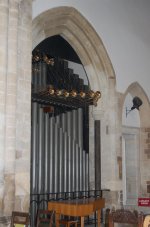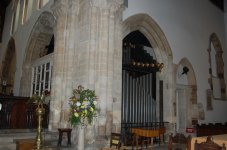Welcome to the Pipe Organ Forum! This is a part of the open community
Magle International Music Forums focused on pipe organs (also known as "church organs"), organists, organ music and related topics.
This forum is intended to be a friendly place where technically advanced organists and beginners (or even non-organists) can feel comfortable having discussions and asking questions. We learn by reading and asking questions, and it is hoped that the beginners (or non-organists) will feel free to ask even the simplest questions, and that the more advanced organists will patiently answer these questions. On the other hand, we encourage complex, technical discussions of technique, music, organ-building, etc. The opinions and observations of a diverse group of people from around the world should prove to be interesting and stimulating to all of us.
As pipe organ discussions can sometimes become lively, it should be pointed out that this is an open forum. Statements made here are the opinion of the poster, and not necessarily that of the forum itself, its administrator, or its moderators.
In order to post a new topic - or reply to existing ones - you may join and become a member by clicking on
Register New User. It's completely free and only requires a working email address (in order to confirm your registration - it will never be given away!). We strive to make this a friendly and informative forum for anyone interested in pipe organs and organ music.
(Note: If you wish to link to and promote your own website please read
this thread first.)
Many kind regards
Frederik Magle
Administrator
Krummhorn
Co-Administrator



